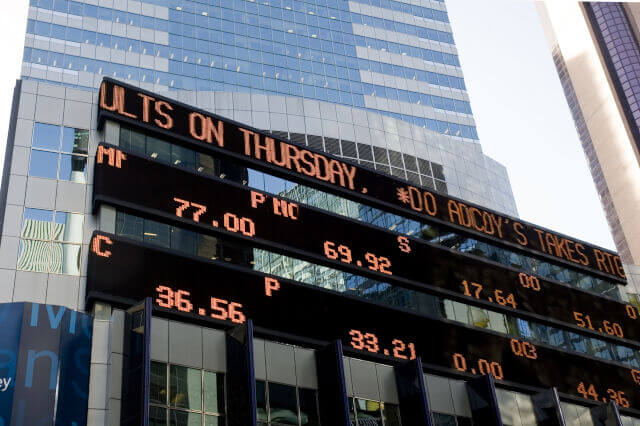The 'RED III' work to be done for industry and government
Key take-aways
- RED III contains new renewable energy targets, some binding, some non-binding, but they are all ambitious;
- The RED III contains a system where Renewable Acceleration Areas are designated. Projects within these RAAs must be authorised quicker and with fewer prior required (nature & environment) surveys. Permits within these areas must be granted within a period between one month up until 1 year depending on the project (longer for offshore projects).
- Renewable energy projects are considered to serve ‘imperative reasons of overriding public interest’;
- By 2030, 42% of hydrogen in Dutch industry should be RFBNOs (renewable fuel of non-biological origin) (vs <1% today);
- In the Netherlands, a bill implementing the REDIII is under preparation to replace renewable fuel units with emission reduction units (and talks to introduce renewable hydrogen units).
- The Dutch government can make way by starting to identify and (subsequently) designate RAAs now so that renewable energy projects can be licensed more quickly (and RED III targets met).
Introduction
The Renewable Energy Directive, or RED, is best described as dynamic legislation aimed at gradually moving the European Union (EU) towards its climate targets. To this end, the RED contains percentage targets, process agreements, as well as harmonisation of sustainability criteria. The ‘first’ RED from 2009, or RED I (2009/28/EC), aimed to cause a 20% share of renewable energy in total energy consumption. This 20% target was binding and had national targets for each Member State. Besides general targets, RED I also contained sectoral sub-targets for Member States, such as a 10% renewable energy target in the transport sector. RED I also contained criteria that provided the basis for an objective assessment of the sustainability of certain energy sources.
After RED I came (naturally) RED II (EU/2018/2001), adopted in 2018. The RED II contained targets for renewable energy consumption of at least 32% (of the total) by 2030 (without targets per Member State). Unlike RED I, the targets in RED II were not binding, which was a result of political agreement. However, RED II did set stricter requirements for raw materials to meet the sustainability criteria. In other words, the threshold for qualifying as ‘renewable energy’ was raised.
Soon after RED II, climate targets were further increased in the EU. The 2021 European Climate Regulation (EU/2021/1119) includes a CO2 emission reduction target of 60% by 2030 (and ‘net-zero’ by 2050). To achieve this, a new revision of the RED was deemed necessary as part of the ‘EU Green Deal’. Preparations for the RED III began in 2020 with impact assessments and consultations, and on 14 July 2021, the Commission sent the RED III proposal to the European Parliament. Meanwhile, the RED III has been approved by all parties (European Commission, European Parliament and European Council), leaving only the publication in the Official Journal to take place before the RED III finally enters into force.
This article sets out the main elements of RED III for the Dutch market. It should be noted that only the main points are discussed; more technical adjustments to sustainability criteria etc. are not addressed. Also, many of the provisions in RED III are also subject to all kinds of exceptions and (national) nuances (for which this article does not discuss). For a complete picture, the relevant provisions should therefore be consulted.
Objectives RED III
The RED III is more of an amendment to the RED II than an entire revision, but it still introduces some fundamental changes. The most relevant ones see new targets for Member States as well as for individual sectors. Some of these targets are binding and will therefore (quickly) have a major impact on the market. These are explained below.
General objective (Article 3)
Whereas RED I had binding targets and RED II non-binding ones, RED III has a combination. The RED III includes a binding target to achieve at least 42.5% of renewable energy in total energy consumption by 2030. On top of that comes a best-efforts obligation to adopt a target of 45%. This makes 42.5% binding, and 45% non-binding. RED III no longer contains overall targets per Member State.
Whether something is a binding target or not is crucial to whether the target can be procedurally enforced. Mandatory targets that are not met by a Member State can be enforced by the European Commission. Through infringement proceedings, the European Commission can hold a Member State liable for non-compliance with European law obligations. This can ultimately lead to penalty payments for the Member State.
Sub-objectives (Articles 15a, 22a, 23, 25)
The RED III contains a number of specific targets because it has been shown that certain categories lag behind in the share of renewable energy. This relates, for example, to buildings, industry and heating and cooling.
For buildings, a non-binding target of 49% renewable energy in energy consumption in buildings (existing and new construction) is included. To achieve this target, Member States must take appropriate measures, such as stricter requirements in national (building) legislation and supporting facilities (e.g. subsidies). It also highlights the role of public authorities (national and decentralised) as a spearhead in making public buildings more sustainable.
For industry, a non-binding target of an annual increase in the use of renewable energy of 1.6% is included. However, a binding target is included that in industry, at least 42% (in 2030) of the hydrogen used should be RFNBOs. Their share in total hydrogen consumption in industry should then increase to 60% by 2035. In particular, RFNBOs are green hydrogen (and its derivatives) and RED III prescribes that they may only count towards the target if the RFNBO achieves CO2 emission savings of at least 70%.
The heating & cooling sector (just as in industry) is subject to an annual increase obligation, only in this case it is binding and amounts to 0.8% per year (for the period up to 2025) and 1.1% per year for the period 2026-2030.
For the transport sector, RED III gives Member States a choice of a binding target, namely either 29% share of renewable energy in total consumption by 2030, or a CO2 intensity reduction of 14.5% by 2030. Member States with a seaport (such as the Netherlands) are also given a non-binding target to have a 1.2% share of energy consumption in the maritime transport sector from the aforementioned RFNBOs from 2030. The most well-known RFNBO is green hydrogen (but also includes green ammonia or green methanol).
Acceleration of projects
RED III also contains a set of measures that should speed up the rollout of renewable energy projects. This relates in particular to speeding up government procedures, such as permitting. As a first obligation, Member States must carry out an inventory of areas necessary to meet the contribution to the RED III targets. This should take into account existing infrastructure, supply and demand expectations and the suitability of the (under)ground in relation to its surroundings.
Also, as a result of the aforementioned inventory, Member States must designate renewable energy acceleration areas, or renewables acceleration areas (RAAs). These RAAs designate areas (land, inland water and sea) where the realisation of renewable energy projects is not expected to have significant environmental impacts. When designating areas for renewable energy, priority is given to existing construction (rooftops and infrastructure) and Natura 2000 areas may not be designated. When establishing RAAs, mitigation measures must be taken to reduce any environmental impacts. Also, when RAAs are designated, an environmental impact assessment and (where necessary) an appropriate assessment under the Nature Conservation Act must be carried out.
Once RAAs are designated, licences in those RAAs are subject to an ‘expedited regime’. This consists of an accelerated assessment of the completeness of the permit application and a maximum duration of the permit procedure of 12 months (or 24 months in offshore RAAs). The maximum duration for permits of relatively small renewable energy projects (such as upgrading existing renewable energy installations, new installations up to 150 kW and storage) should be a maximum of six months (12 months in offshore RAAs). For permits within RAAs, these do not have to include an environmental impact assessment or appropriate assessment, as these documents have already been prepared before the RAA designation.
Specifically, ‘repowering’ of existing installations (referring to renewing and/or upgrading existing renewable energy installations) and solar energy projects on existing buildings are subject to a maximum permit period of three months. Heat pumps below 50 MW must be licensed within one month.
Permits for renewable energy projects outside RAAs must be granted within two years or within three years for offshore projects. For smaller projects, that period is one year or two years if offshore.
Finally, when preparing and granting permits, the development, construction and operation of renewable energy installations, their connection to the grid, the grid itself and storage facilities will be deemed to serve a so-called ‘compelling reason of overriding public interest’. This will allow certain exceptions under nature protection, environmental assessment and water quality regulations to apply to renewable energy projects.
Dutch implementation
The RED III is a European Union directive, which means that its content must be transposed into national law. Some of the provisions are more of a policy nature, but some elements will require legislative amendment.
The RED III must be implemented by Member States in their national legislation within 18 months of its entry into force. This deadline starts to run from the 20th day after the date of publication of the RED III – which will be in the near future. However, the RED III also contains different deadlines for specific provisions.
For instance, Member States must already apply the rule that renewable energy projects are considered ‘imperative reasons of overriding public interest’ within three months of entry into force, and from six months onwards, Member States can designate existing areas as RAAs. Member States do have an obligation to have new RAAs designated before 27 months after RED III enters into force. The identification of suitable areas and energy projects must be completed within 18 months of entry into force.
For part of the implementation, the Netherlands has already moved forward and submitted an amendment to the Environmental Management Act for consultation, even before RED III has entered into force at all. This proposed legislative amendment can be commented on until 3 November 2023.
The main change in the proposed amendment to the Environmental Management Act involves replacing the current system of renewable fuel units (HBEs) with emission reduction units (EREs). HBEs are certificates reflecting an equivalent of 1 gigajoule of renewable fuel. HBEs can be obtained when ‘booking in’ renewable fuel and the HBEs can be traded with parties that have to report annually on the share of renewable fuel in their total sales. Indeed, individual fuel suppliers must demonstrate annually that they have delivered a certain proportion of their fuel deliveries as renewable. They can do this by surrendering an equivalent of HBEs.
Under the proposed amendment to the Environmental Management Act, HBEs/EREs will no longer be related to the amount of energy (in gigajoules) but to the CO2 emission reduction. A distinction is also made according to the (sub)sector where the reduction is realised, so that it can be properly administered whether the Netherlands meets the targets for those subsectors. The new system with EREs will be further elaborated in subsequent regulations (such as the Energy Transport Decree).
It is also currently considering how to fulfil the obligation to have at least 42% of hydrogen consumption as green hydrogen / RFNBO by 2030. Currently, less than 1% of hydrogen in the Netherlands is RFNBO. So big steps still need to be taken here, as the Netherlands is one of the largest hydrogen consumers in Europe. The current mindset is to join the HBE/ERE system for this part too, introducing renewable hydrogen units that can be used in industry for the annual obligation. Those units can be traded and saved.
An issue that arises with the RFNBO annual commitment is that currently very limited supply and infrastructure is available for off-take by industrial parties. Hydrogen infrastructure is still under development (the hydrogen backbone is targeted to be ready by 2030). In addition, the import and production of green hydrogen is currently very limited and far from sufficient. So the question is how the Netherlands will succeed in meeting the annual obligation. There are enough projects and initiatives in the market that can contribute, but it would help if aspects such as quick licensing and certainty regarding support measures were improved. This is precisely what the RED III provides tools for.
Conclusion
RED III provides a nice horizon for Europe’s medium-term sustainability ambitions. With a number of targets (binding and non-binding), it prescribes what Member States like the Netherlands must meet by 2030 (and beyond) to move towards net-zero in 2050.
The targets from RED III are not soft and there is a lot of work to be done to meet them. To facilitate that, RED III also includes a regime to speed up permit issuance. Those rules include maximum decision deadlines that many developers will be eagerly awaiting. To realise this acceleration, the Dutch government will just have to get to work quickly on identifying renewable energy sites and designating RAAs.
The Dutch government has made a quick start on implementing part of RED III, but it is to be hoped that the provisions on speeding up permit procedures will also be taken up equally energetically.
In addition, (start-up) problems will undoubtedly arise in the implementation and realisation of the targets (as in the case of the annual RFNBO obligation), but by identifying and discussing these problems quickly with market players, they can also be solved earlier, better and with more support.





